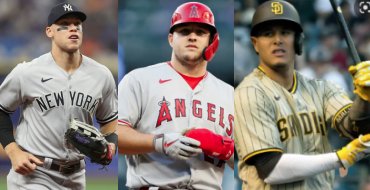If you’re looking for an angle that can give you an edge when betting on baseball – and who isn’t? – then you should take a look at the overweight older man behind the plate. The home plate umpire has more control on a game than anyone else on the field, and they often establish trends that can be exploited. Umpires have been on our minds a lot these days thanks to the imperfect game a couple of weeks back, so this is a chance for us to get a little something back from the umps that stole that piece of history.
Suggesting that an umpire can affect a game doesn’t mean that I am suggesting some complex conspiracy theory or something, or that they prefer some teams over others and that bias leads to predictable outcomes. Where umpires can be most different in the way they call games, though, is the strike zone. The strike zone is theoretically described and should be the same in all games. That’s just not the case, though. Different umpires interpret the strike zone differently, and they can call different pitches in different ways. Their height can contribute to the view they have of the ball and how they see things as well. If you’ve watched baseball for any time at all you know that a strike for one umpire isn’t always a strike for another.
Major League Baseball regularly reviews the work of their umpires during the season, and uses video technology to help them see what they are doing and improve their games. What the league is most interested in, though, is that the umpire is consistent when compared to himself. The league won’t be bothered when a strike zone is slightly different than others as long as that strike zone is the same every time that umpire is behind the plate. That consistency means that teams know what to expect, and pitchers can throw to that strike zone. A constantly shifting strike zone would be a real problem.
The strike zone can have a real impact on the scoring in a game. The larger the strike zone is, the more strikes a pitcher is able to throw, and therefore the more strikeouts and less walks he is likely to get. That in turn will lead generally to a lower score. The opposite is obviously true with a smaller strike one. An umpire that has a consistently larger strike zone, then, could be more likely to call games that go under the total, and vice versa. One sided trends where an umpire goes over or under the total a disproportionate amount of the time can last for a whole season or more because the league isn’t going to make serious adjustments to a strike zone in-season as long as it is consistent. Keeping track of the umpires who are establishing strong trends, then, can lead to profit for observant bettors.
There is an important thing to remember here, of course – this is not a fool-proof angle that you can blindly rely on. The umpire isn’t the only factor in the total of a game by any means, so you need to make sure that the bet makes sense for more reasons than just who is behind the plate. Where this really can be useful, though, is as a means of reinforcing an opinion, or as a way to pick out the games that might deserve a closer look.
Here’s a look at three guys who have gone over a lot this year, and three more who have had more than their share of unders:
Over
Angel Hernandez – Hernandez has seen 10 of his 15 games this year go over the total, with two more ending as a push. He has called games with double digit totals runs scored seven times, with a total of nine reach four more times. The last time he went under was May 3, and he has called eight games since then.
Tim Welke – Like Hernandez, Welke has gone 10-3-2 against the total in his 15 games. Impressively, he has been behind the plate for two games that have seen 20 or more runs scored already this year. His consistency may be fleeting, though – he has gone under in two of his last four games.
Angel Campos – The over is 9-2 in Campos’ 11 appearances. The second of those two unders came in relatively unique circumstances. It almost never happens, but Campos called games in which Josh Johnson started twice in a row. The first went easily over, but the second was a comfortable under. Johnson’s fresh familiarity with the way Campos calls games could certainly have been a contributing factor.
Under
Bob Davidson – 11 of Davidson’s 14 games have gone under, with a push as well. His last under was May 4, with eight unders following since then.
Jim Wolf – Wolf has done even better than Davidson – it has only taken him 13 games to amass 11 unders. You can argue that a disproportionate number of overs or unders could be a fluke of scheduling, but the sample size here is certainly large enough that you have to consider that there is more going on than that. Wolf’s last game was an over, but he went under 11 games in a row before that. An 11 game streak is no coincidence.
Dan Iassogna – Iassogna has gone under in three-quarters of his games – nine of 12. He has the longest active streak – his last over was on May 2.














